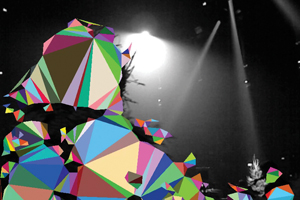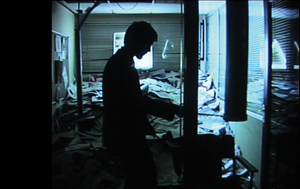Live and kicking
Live events online – particularly live cultural events – are becoming increasingly popular with audiences around the world, and the Roundhouse is at the forefront of this trend. Conor Roche shares their experiences


Broadcasters, film-makers, artists and musicians are all becoming more aware of the potential of live events online to unite audiences from across the globe through a common interest at a single moment in time. Recent examples include the Guardian’s broadcast of ‘Turn of the Screw’ from Glyndebourne, YouTube’s coverage of the Coachella music festival and Burberry’s online broadcast of their London Fashion Week show. Live event broadcasting online is nothing new, but events that exist exclusively for audiences online are also becoming increasingly popular. Take the example of Kevin Macdonald’s latest documentary ‘Life in a Day’ which was premiered via YouTube, or Radiohead’s sole recorded performance of their recent album ‘King of Limbs’ via the BBC.
Sitting back and passively enjoying an event online isn’t ground breaking. But the web is not a passive medium – it’s interactive, it’s social. Sharing experiences with friends and strangers alike is important: social norms remain true regardless of the medium and people love sharing experiences, together. Live events online provide opportunities for people to come together and share an experience as they would do during a live event in a venue.
Since January 2010 the Roundhouse has produced a series of events, entitled Blackbox, which are broadcast live from the Roundhouse exclusively to online audiences. These shows are edited, recorded, performed and broadcast live, with an archive version made available on demand following the show. There is no audience at the Roundhouse: Blackbox events can only be viewed online. The freedom provided by the lack of a physical audience in the performance space provides the directors of Blackbox, Jamie Roberts and Will Hanke, with an opportunity to explore how the Roundhouse can bring live performance to audiences in ways not experienced previously, while using innovative production techniques and technologies that are not typical of a live broadcast. The series has included a broadcast filmed entirely using thermal imaging cameras and a broadcast using real-time live image mapping via hacked Microsoft Kinect Sensors.
For the first Blackbox series, the Roundhouse partnered with MySpace and StreamUK. Each broadcast was hosted on MySpace, with StreamUK providing the streaming technology, allowing the directors and the Roundhouse to concentrate on filming and producing the live event. The most recent session with the band British Sea Power was viewed live by over 58,000 with an average viewing time of over 8 minutes. The event has just been nominated for Best Event at this year’s BT Digital Music Awards.
The success of Blackbox follows many years of investment by the Roundhouse in its broadcast production facilities. Broadcasting is not the natural domain for a performing arts venue and making a film is hugely challenging. Making a live film of a live performance while relying on technology for production and distribution presents an even tougher set of challenges. In addition, the same consideration and attention to detail required for producing a live event for a physically present audience is required for producing a live event for a live audience online. For example, in the build-up to each Blackbox event we provided audiences with live visuals and a live DJ set (Matt Horne was DJ for British Sea Power); audiences were invited to send in requests to the DJ via Twitter; we provided social media integration to encourage audiences to engage with one another; and we requested feedback from the audience before and after each event.
Considering the complexities of producing such an event there are benefits that have significant potential for cultural organisations. The most obvious benefit is reach and access. An audience of 58,000 is almost 20 times the physical capacity of the Roundhouse. Data suggests that almost as many people experienced a Blackbox event last year as physically came to the Roundhouse to see a show. If the remit of Arts Council England is ‘to get great art to everyone’, then producing engaging live cultural events for audiences online can go some way to realising that ambition.
The second significant potential benefit for cultural organisations is the opportunity for generating revenue from live events online. At a time when all cultural organisations are exploring additional financial means to sustain their activities, perhaps these sorts of online activities have the potential to open up new business models. Advertising revenue has been sustaining the commercial broadcasting industry for decades. If users, viewers, listeners and lovers of art cannot be convinced to part with their pound online, there should be no shame in exploring the potential of using advertising revenue for the purpose of sustaining cultural actives online.
But generating revenue will not be easy, and although it is common knowledge that the capacity of a venue and expected ticket sales for a production is a prime determining factor for calculating the budget of a production in a venue, there is no such formula for online productions. With that in mind, collaborations between the commercial media industry and cultural sector must be encouraged to develop a framework that demystifies the revenue-generating potential for live events online.
Live cultural events online do not have the potential to replace or even match the potency of a live event experienced in a venue. However, they do provide credible and beneficial alternatives for audiences and cultural organisations. They also provide opportunities for those organisations to make best use of their production experience and creativity, while accessing a much greater audience beyond the bricks and mortar of a venue.
Join the Discussion
You must be logged in to post a comment.